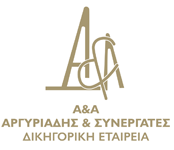Commission Delegated Regulation (CDR) 2017/583 (hereafter referred to as RTS 2) on transparency requirements for non-equity instruments establishes that, 6 months prior to the date of application of MiFIR, CAs shall publish information on the liquidity classification of financial instruments and the sizes large in scale (LIS) compared to normal market size and the size specific to the instrument (SSTI).
CDR 2017/587 (hereafter referred to as RTS 1) and CDR 2017/588 (hereafter referred to as RTS 11) on transparency requirements for equity instruments establishes that, 4 weeks prior to the date of application of MiFIR, CAs shall publish information on, respectively, the liquidity classification and tick size band assessment of equities.
EEA CAs, with the exception of Poland, have delegated to ESMA the computation of transparency calculations including the transitional transparency calculations (TTC). To execute them, ESMA has compiled the information from Trading Venues of the Member States.
Please note that ISO 17442 Legal Entity Identifiers (LEIs) are not provided for some reference entities for single name CDS and issuers of the underlying bond for interest rate derivatives. ESMA would like to remind that the LEI will become a required mandatory identifier for such entities under the Commission Delegated Regulation (EU) 2017/585 and RTS 2 from 3 January 2018. Publication of the TTC is made without prejudice to the requirements envisaged in the above-mentioned Delegated Regulations full compliance with which is expected after MiFIR application date. Market participants are encouraged to ensure availability of LEIs for the respective reporting requirements in due course and sufficiently in advance of 3 January 2018. Further information about LEIs may be obtained here: https://www.gleif.org/en.
The list below contains:
- the equity TTC and tick size band assessment for both liquid and non-liquid instruments, in accordance with RTS 1 and RTS 11[the results contained in these files are no longer applicable from 1 April 2019. From now on the annual transparency calculations will be provided only by the Financial Instruments Transparency System (FITRS)];
- the bond liquidity assessment, except for ETCs and ETNs, for both liquid and non-liquid instruments, in accordance with RTS 2 [the results contained in this file are no longer applicable from 16 May 2018. From now on, the liquidity assessment for bonds (except for ETCs and ETNs) is provided by the IT system]; and
- the asset classes as defined in the Regulation and provides hyperlinks to data files containing the outcomes of the TTC for all non-equity instruments that have been classified as liquid in accordance with RTS 2.
Please note that previous versions of the TTC files for Credit Derivatives and Equity Derivatives Part I were published by ESMA on 3 July 2017. After the detection of quality limitations these files have been updated and re-published by ESMA on 11 September 2017. For further information on the changes in these TTC files, please refer to the FAQ.
Please note that previous versions of the TTC files for Equity instruments and the liquidity assessment for Bonds (except ETCs and ETNs) were published by ESMA on 6 December 2017. After the detection of quality limitations these files have been updated and re-published by ESMA on 22 December 2017. For further information on the changes in these TTC files, please refer to the FAQ.
Please note that ESMA has re-published the TTC files for Equity instruments and the liquidity assessment for Bonds (except ETCs and ETNs) on 19 January 2018. In line with CDR 2017/587 Article 19, CDR 2017/583 Article 18 and CDR 2017/588 Article 5, for equity instruments, traded for the first time on a trading venue between 13 September 2017 and 2 January 2018 (included), and bond instruments, traded for the first time on a trading venue between 01 November 2017 and 2 January 2018 (included), NCAs have submitted to ESMA the applicable TTC for which the NCAs are in charge and did not delegate this task to ESMA.
ESMA has performed these calculations with utmost care and to the best of its ability. Given the scope and complexity of the calculations, including the various underlying data sources, changes of the results after the initial publication can however not be excluded. ESMA expects to continuously supplement and update the information provided where necessary. Any future up-date will be published on the ESMA webpage accompanied by specific information in the ESMA News section. To receive notifications in the case of updates of the calculations or the FAQ document, please register on the Notification page and choose section MiFID II Transparency Calculations.
The TTC files contain information provided by the Polish Authority (KNF) to ESMA on instruments for which it is the CA, marked accordingly in the TTC files. ESMA is not able to provide any representation or warranty that the available content is complete, accurate or up to date.
The publication of the information on this website does not prejudice the results of verifications on the completeness and correctness of the transposition of EU law into national law.
These calculations contain also data related to European Economic Area (EEA) / European Free Trade Association (EFTA) States based on the notifications received by ESMA, the publication of which does not affect the status of incorporation of relevant EU law into the EEA Agreement and any related legal consequences.
In addition to the above provisions, attention is also drawn to the Legal Notice on the ESMA website.
From 3 January 2018, the Financial Instruments Transparency System (FITRS) displays information on transparency calculations, in particular for derivatives (at ISIN level) and new listed bonds and equities. From 1 May 2018 also the quarterly liquidity assessment for bonds (except ETCs and ETNs) admitted to trading before and until 28 February 2018 is provided through FITRS. These results are applicable from 16 May 2018. Detailed instructions on how to find the applicable TTC for specific instruments, in both FITRS and files available in this webpage, are available in the FAQ document.

